AMD Details Ryzen 7040U Mobile Processors

AMD has announced the specs of its 7040U "Phoenix" series processors, including some of its first with its XDNA-powered AI engine. There's still no word on the 7040HS processor specs, though the company did tell us yesterday that the HS chips are now shipping to OEMs and are slated to arrive at retail in the coming weeks.
The lineup is headlined by the AMD Ryzen 7 7840U, paired with Radeon 780M graphics and Ryzen AI using the XDNA architecture. AMD suggests it's stronger than both competing Intel PCs and Macs.
| Header Cell - Column 0 | AMD Ryzen 7 7840U | AMD Ryzen 5 7640U | AMD Ryzen 5 7540U | AMD Ryzen 3 7440U |
|---|---|---|---|---|
| AMD XDNA Architecture | Yes | Yes | No | No |
| Cores/Threads | 8/16 | 6/12 | 6/12 | 4/8 |
| Base clock | 3.3 GHz | 3.5 GHz | 3.2 GHz | 3.0 GHz |
| Boost clock (up to) | 5.1 GHz | 4.9 GHz | 4.9 GHz | 4.7 GHz |
| Cache | 24MB | 22MB | 22MB | 12MB |
| TDP | 15-30W | 15-30W | 15-30W | 15-30W |
Only the Ryzen 7 7840U and Ryzen 5 7640U will get Ryzen AI through XDNA. AMD isn't saying a ton about what it will do, though its slides claim "magical new experiences" and that the capabilities can "advance and improve over time." The only real claim it's making is that there will be a Studio Effects Pack in Windows 11 that can be used only on a dedicated AI engine such as this one, but that those are not yet supported.
In its own benchmarks, AMD compared the 7840U to Intel's Core i7-1360P, claiming it offers up to 29% better content creation performance, 37% improvement in web applications, 39% in productivity, 89% on Passmark, and 128% improvement in media encoding.
According to AMD's small print, the 7840U was on an AMD reference board with 16GB of RAM and a 1TB SSD, while the Intel machine was an MSI Summit Flip 14 with 32GB of RAM and a 1TB SSD. Tests included PCMark 10, Passmakr, Kraken, Procyon Microsoft productivity tests, PCMark 10 Digital Content Creation, Handbrake, Blender, and LAME MP3.
Compared to Apple's M2, AMD claims the Ryzen 7 7840U is 5% better at web browsing, 8% better at image editing, 9% better at 3D rendering, 14% more responsive, 72% better at multiprocessing and 75% better on Passmark 10.
Looking at the legalese, AMD tested against a MacBook Pro 13-inch (meaning the M2 as under a fan) with 16GB of LPDDR5 RAM and a 1TB SSD. Tests to get those numbers include Passmark 10, Kraken, Puget, and Blender benchmarks. It's not clear how much of this includes Apple's own neural engine in its M2 processors.
There are three new integrated graphics options: the Radeon 780M, 760M and 740M. The 780M is the top model, on Ryzen 7 and 9 chips, with 12 cores up to 2.7 GHz. The new Radeons use RDNA 3, and have a new media engine for AV1 and ML enhanced encoding and "increased AI throughput." The company claims the peak performance out of its integrated GPUs is up to 8.6 TFLOPS (FP16).
| Header Cell - Column 0 | Radeon 780M | Radeon 760M | Radeon 740M |
|---|---|---|---|
| Cores | 12 | 8 | 4 |
| Boost clock | Up to 2.7 GHz | Up to 2.66 GHz | Up to 2.5 GHz |
| RB+ | 4 | 2 | 2 |
| CPUs | Ryzen 7 and 9 | Ryzen 5 | Ryzen 5 and 3 |
AMD compared the Radeon 780M to the Iris Xe graphics on the Core i7-1360P, claiming that at 1920 x 1080 at low-quality presets, the Ryzen 7 7840U with the new graphics was 30% faster at DOTA 2, 40% faster at CS:GO, 63% faster at Far Cry 6 and a whopping 139% faster on Cyberpunk 2077. Again, the Windows laptops here was an MSI Summit Flip 14 with 32GB of RAM and 1TB SSD.
Like all vendor benchmarks, we will have to see in our own testing how the CPU and new integrated GPUs stack up.
AMD is making big promises on battery life, but isn't saying much. Its slides claim that it "invests heavily in leadership efficiency" and that the 7040U chips will have "smart power management designed to deliver the longest possible time unplugged." With no numbers to go off of, we'll have to see in our testing.
The Phoenix processors were first announced at CES, with HS-series chips scheduled to release in March. Those were originally pushed back to April, and AMD now tells us they are shipping to OEMs and will arrive at retail in the next few weeks.
The company is mum on which models will support the 7040U series and hasn't said anything about when they'll come out. Presumably, this announcement means that laptops aren't far behind — perhaps at Computex in Taiwan later this month. And hopefully that means we'll hear more about the HS-series Phoenix chips, too.

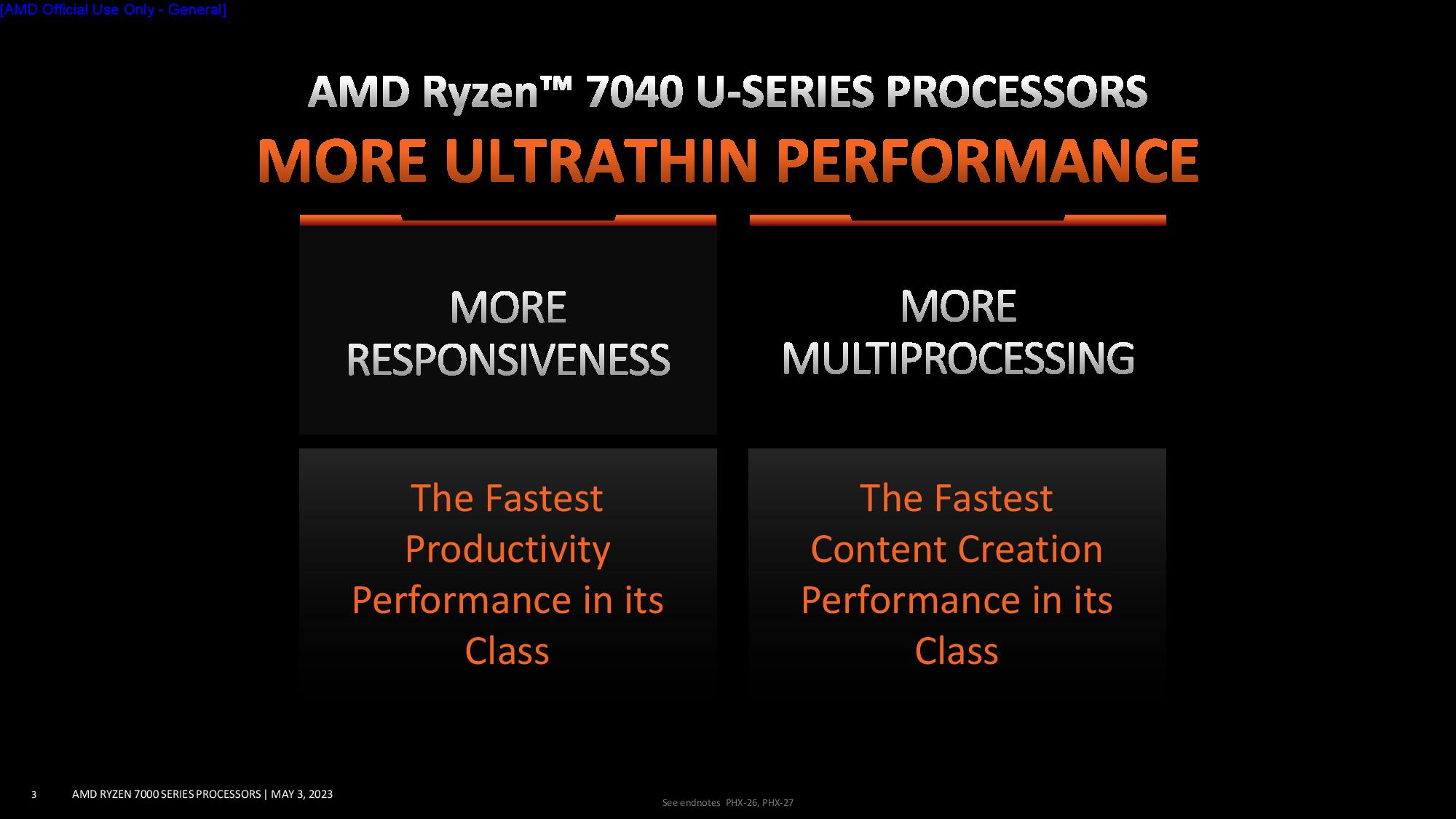


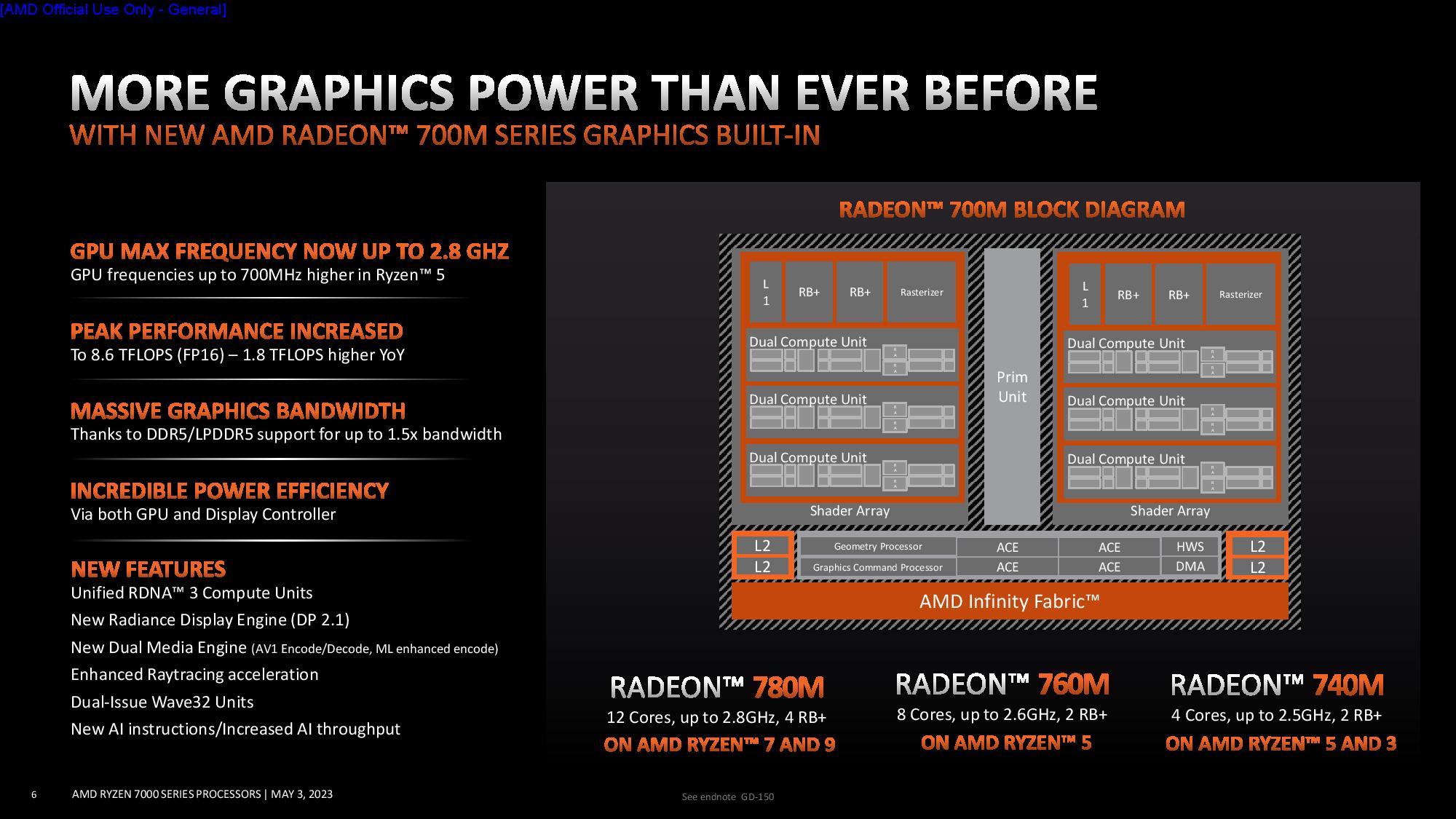
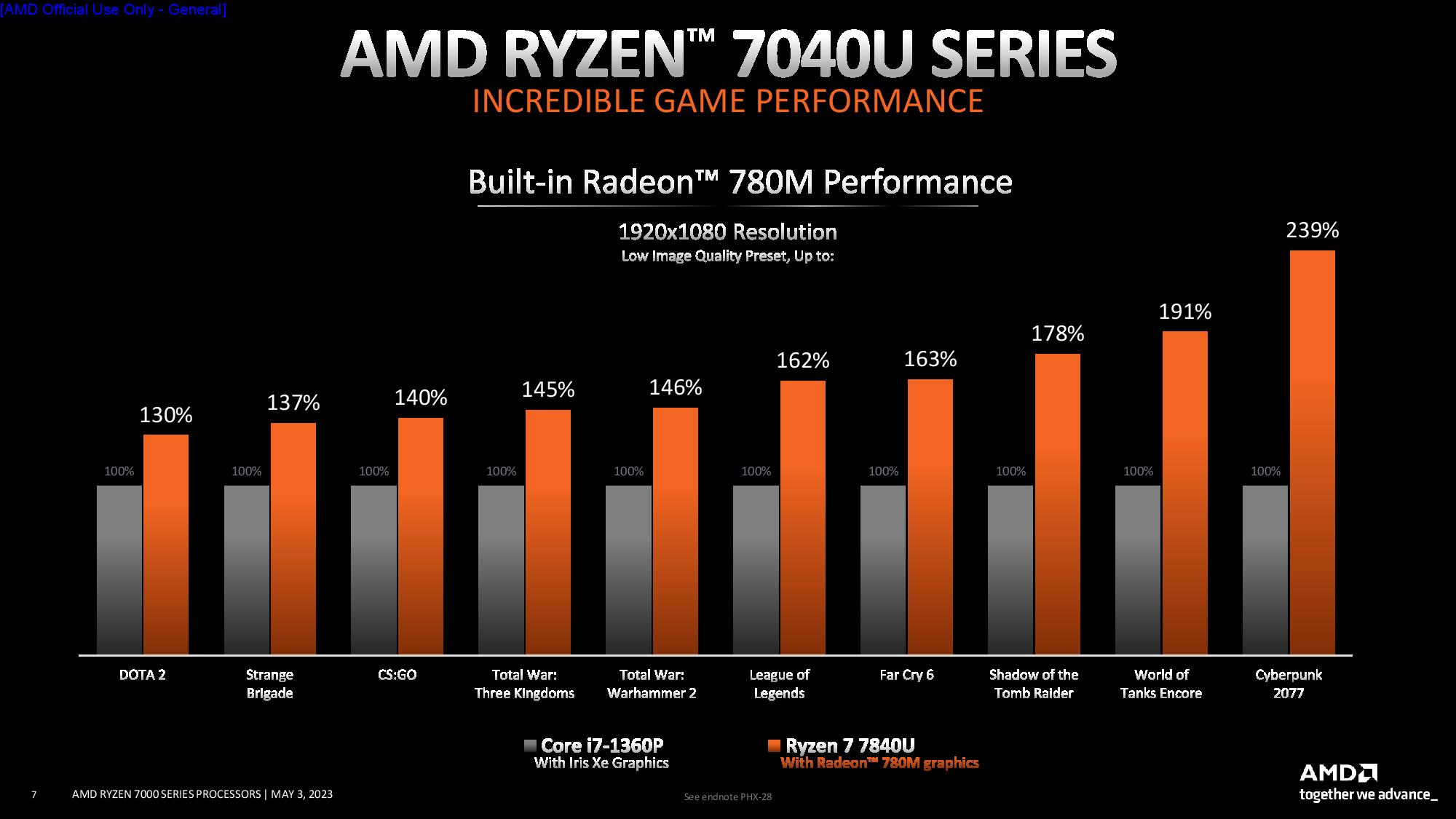
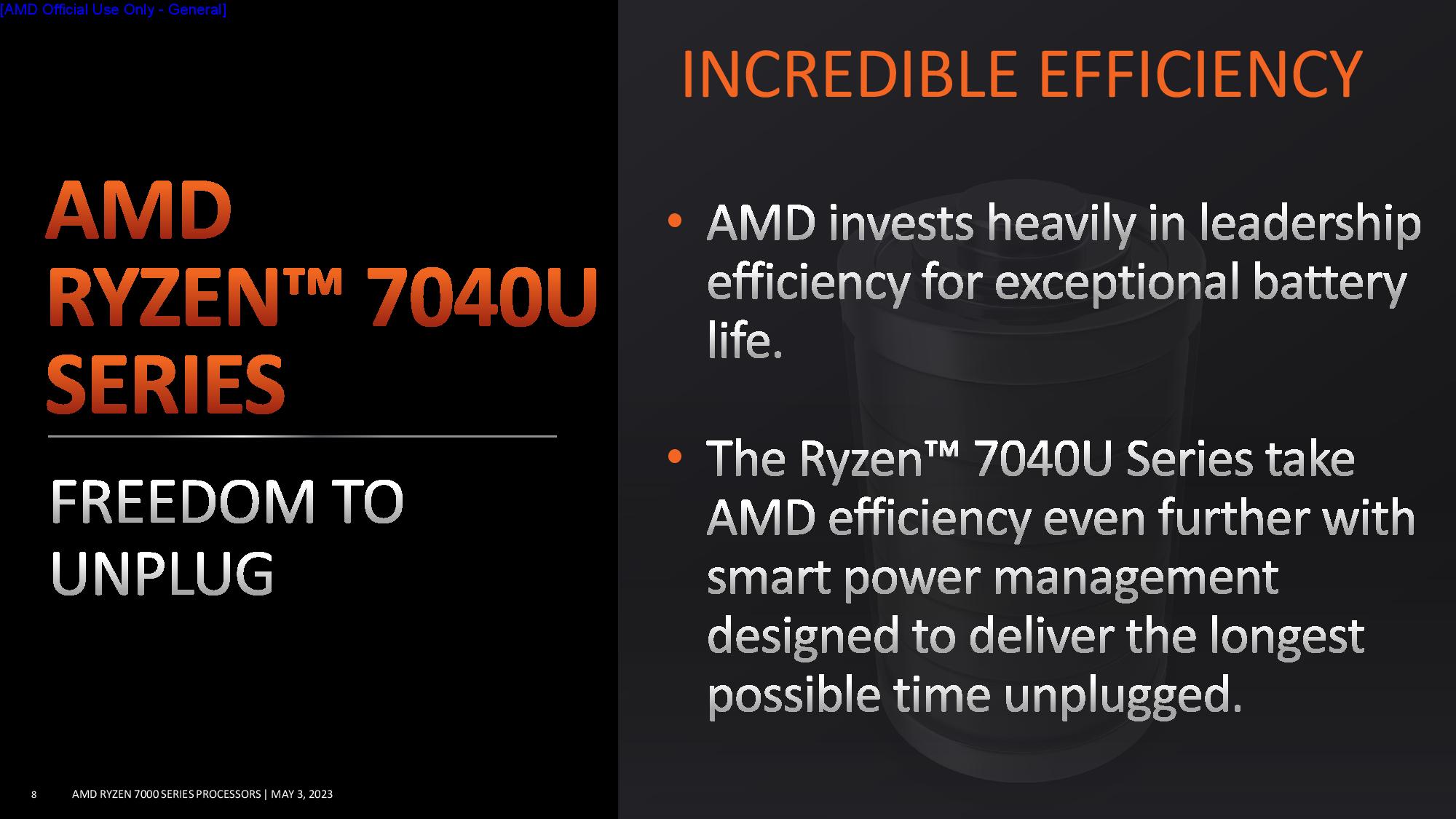
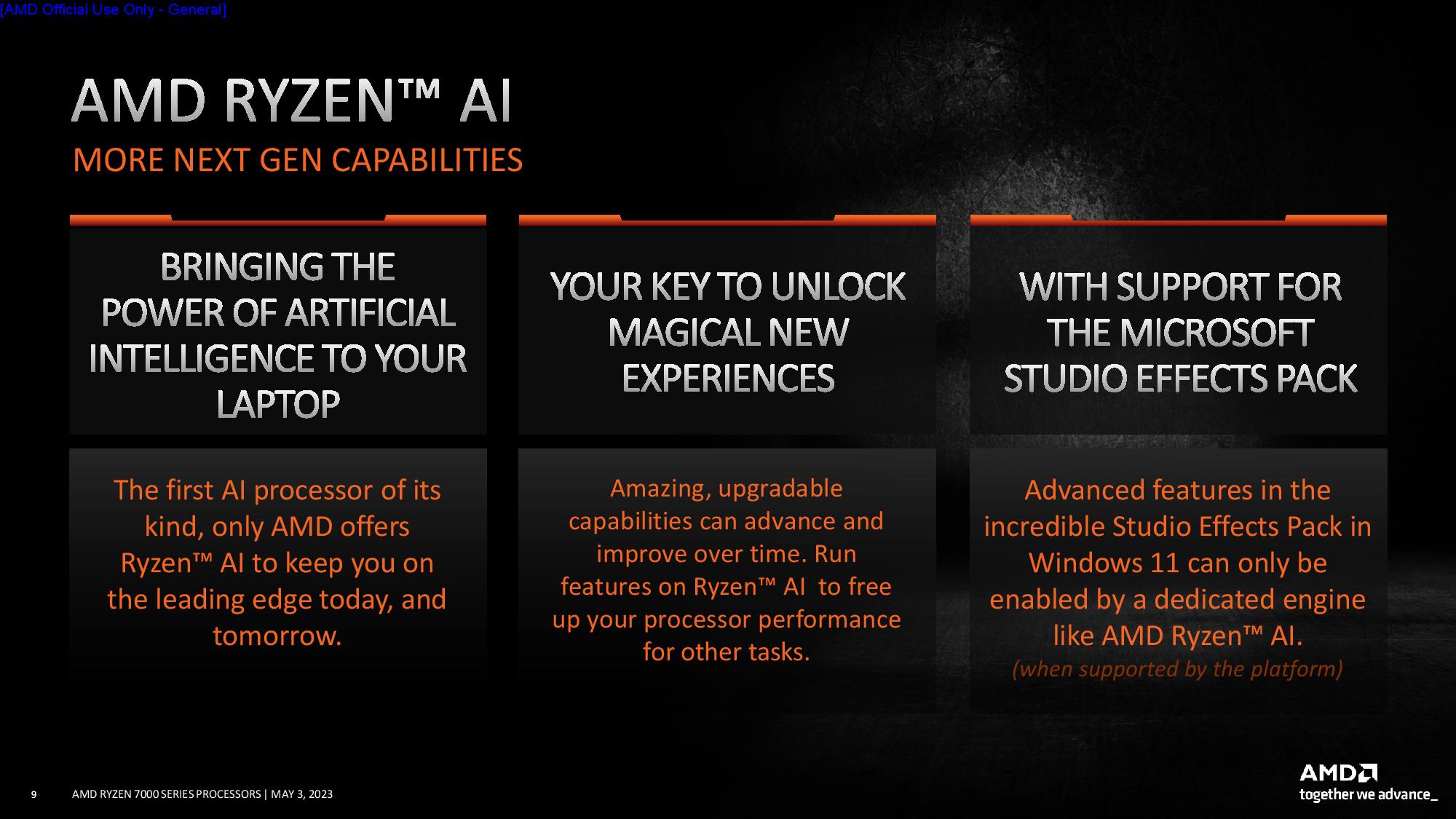
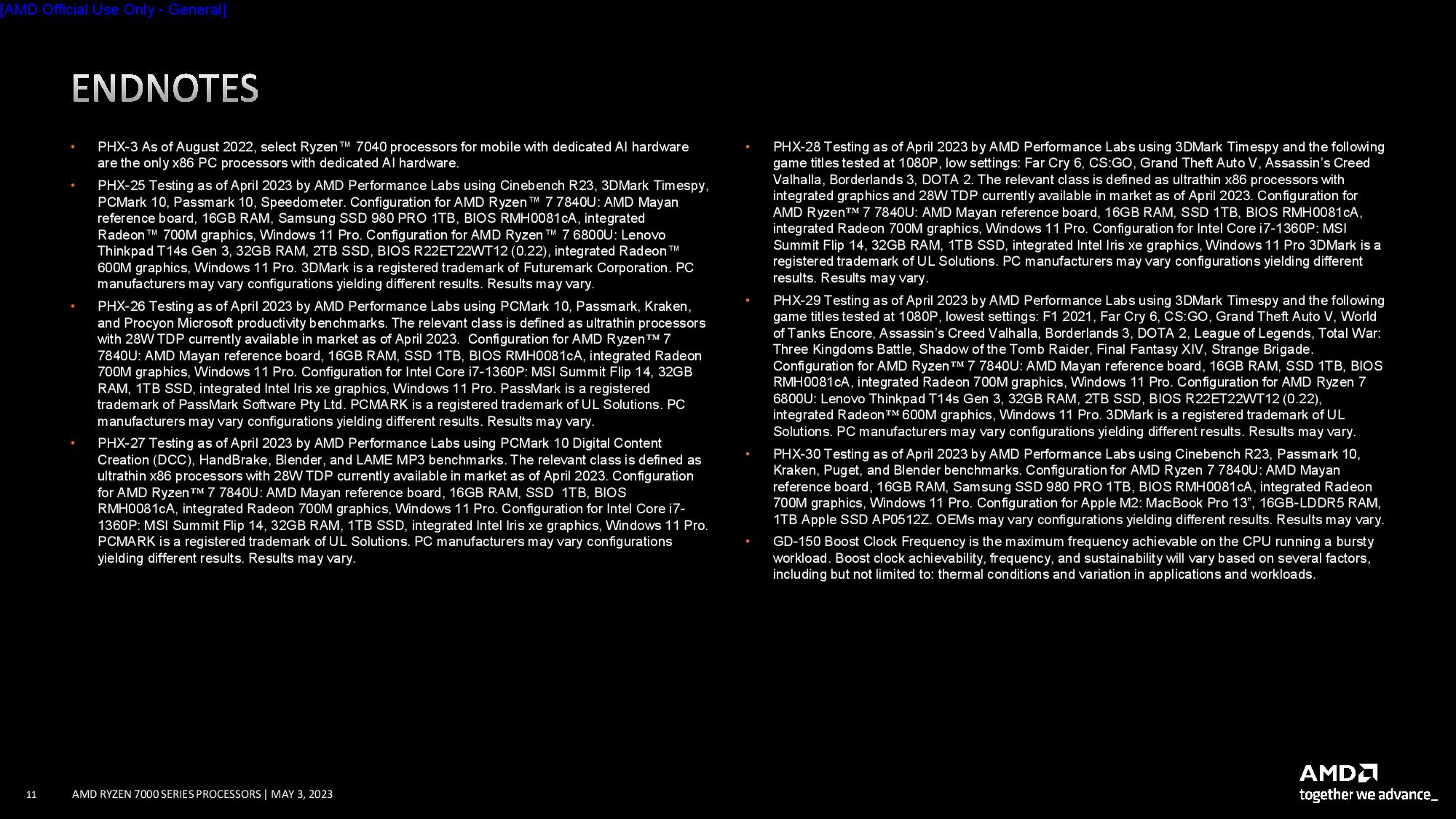
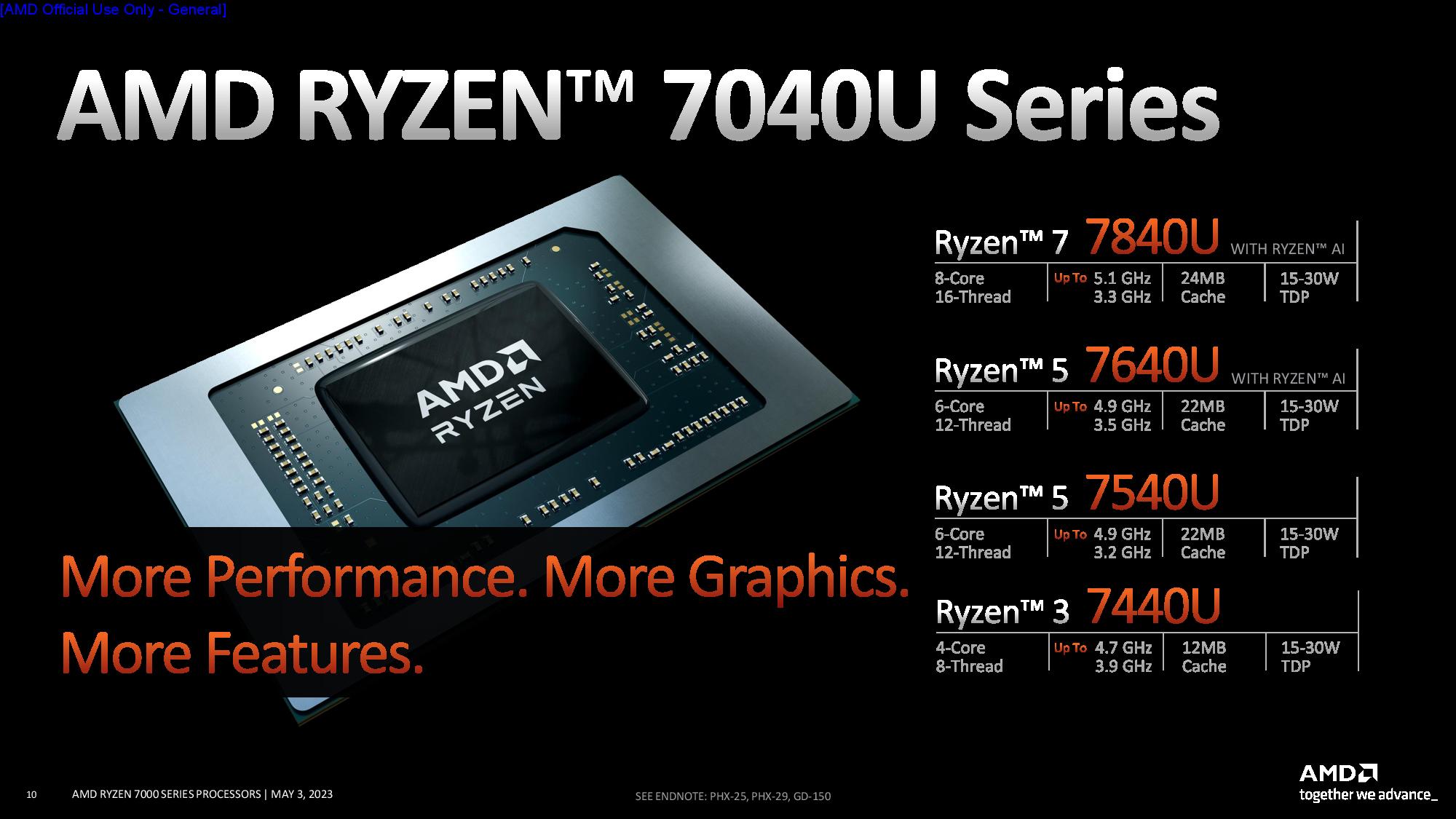
- MORE: Zen 4 Ryzen 7000 All We Know
- MORE: Best Gaming PCs
- MORE: Best Ultrabooks and Premium Laptops
- MORE: Best CPUs for Gaming
Get Tom's Hardware's best news and in-depth reviews, straight to your inbox.

Andrew E. Freedman is a senior editor at Tom's Hardware focusing on laptops, desktops and gaming. He also keeps up with the latest news. A lover of all things gaming and tech, his previous work has shown up in Tom's Guide, Laptop Mag, Kotaku, PCMag and Complex, among others. Follow him on Threads @FreedmanAE and BlueSky @andrewfreedman.net. You can send him tips on Signal: andrewfreedman.01
-
lightofhonor Have a Framework preorder for a Ryzen 7 7840U. Q3 is pretty soon so hopefully it performs well!Reply -
bit_user As usual, AMD's timing isn't ideal. Meteor Lake will follow soon enough to dampen Phoenix' impact, not unlike how Raptor Lake stole much of the thunder from Ryzen 7000.Reply
I hope AMD releases a Zen 4+ on TSMC N4, for AM5. I doubt it, but it would give them something to run against the Alder Lake Refresh. -
ikjadoon ReplyAMD is making big promises on battery life, but isn't saying much. Its slides claim that it "invests heavily in leadership efficiency" and that the 7040U chips will have "smart power management designed to deliver the longest possible time unplugged." With no numbers to go off of, we'll have to see in our testing.
Probably because AMD pulled an Intel on Zen4 mobile. All 7040U CPUs, and those benchmarks, use a new default TDP: 28W.
These are basically Intel P-series now; 28W base and, what, maybe 50W-60W boost?
Why increase the default TDP by +86%, especially after a node shrink? Why follow Intel's terrible example? Why not at least set the default to 15W, so your OEMs + benchmarks, are aligned with what users want in ultra-portable laptops (e.g., more battery life, not more heat)?
-
oofdragon What desktop GPU is this "8.6" tflops igpu equivalent to? Being FP16 I suppose it's half a RX6600 at around RX580 lvl?Reply
If you stop to think about it the Nintendo Switch runs on a igpu equivalente to a GTX260 (!!), that's right a 2008 mainstream card, being just a portable PS3 (2006). It's a "17 years old console" right there, that's really insane. Being a 720p portable and having a dock that could add power a la SLI the switch could have been at least a PS4 lvl console back then, but no it was just that bad even at launch..... I didn't buy it, hoped it flopped. At that point Nintendo should have just became software focused and we would have a tears of the kingdom for the PS5 today, not for the "PS3"
Anyway.. and now what? Today it's possible to have around 4.2tflops on a igpu, its about a portable PS4 pro like the Z1 extrene. If Nintendo kept the same graphics of today but went 4k it would need at least 1.5tflops.... so to call it a "next gen" console and not a "switch pro" it really need a hardware AT LEAST of a 4tflops, but really will it? The Z1 is just a Switch pro.. the Z1 extrene is the real deal, but at $600.. means Nintendo will wait until next year so prices lower a bit?
You see.. that's why we are getting a rtx 4060 barely keeping up with a rtx 2060s from 4 years ago, because people just buy it. Had no one bough the Wii to begin with, knowing it was a really crap hardware, Nintendo would have stoped.itmright there. It's consumers fault really, people just buy whatever is new without "complaining*, aka not buying. -
bit_user Reply
Right. So, we should assume 4.3 fp32 TFLOPS, probably turbo.oofdragon said:What desktop GPU is this "8.6" tflops igpu equivalent to? Being FP16 ...
Here are the official fp32 specs of some AMD GPUs in that ballpark:
ModelLaunch Date (year-mo)Launch Pricefp32 TFLOPS (base)fp32 TFLOPS (turbo)GDDR Bandwidth (GB/s)HD 79702012-01$500
4.10
4.30
288R9 2902013-11$400
4.85
320R9 3902015-06$330
5.12
384RX 5702017-04$170
4.78
5.10
224RX 5300 XT2019-10OEM
4.70
5.20
112RX 6500 XT2022-01$200
4.73
5.77
144
I think we can safely say it must have some Infinity Cache, or else even that amount of compute power will largely go to waste.
For Nvidia cards, I'll just offer one point of comparison. The GTX 1660 launched in 2019-03 with 4.31 (5.03) fp32 TFLOPS and 192 GB/s of GDDR5 bandwidth.